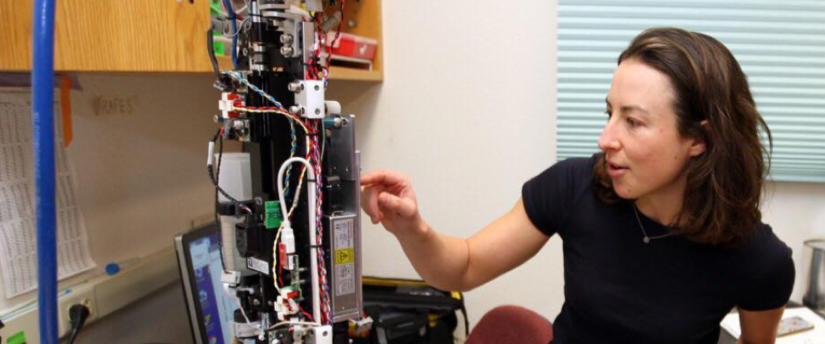
Delta Science Fellowship 2020
Fellow: Alexis Fischer, Postdoctoral Fellow, UC Santa Cruz
Research mentor: Raphael Kudela (University of California, Santa Cruz)
Community mentors: James Cloern (U.S. Geological Survey) and David Senn (San
Francisco Estuary Institute)
Why this research matters
The San Francisco Bay-Delta ecosystem has experienced a dramatic decline in pelagic fish since 2001, particularly in Suisun Bay (a phenomenon known as “Bad Suisun”). Research suggests that this decline is caused by reduced phytoplankton biomass, which was initially attributed to high ammonia concentrations in wastewater effluent, and invasive clams that consume the phytoplankton. However, this study indicates that salinity tolerances of different phytoplankton plays an important role in determining regions of high and low biomass. As work is underway to reduce wastewater nitrogen pollution, understanding the complex mechanisms underlying “Bad Suisun” is important to restoring ecosystem health.
Project
This project assessed the physiological basis for reduced phytoplankton growth in Suisun Bay, prior to the major upgrade at the Sacramento Regional Wastewater Treatment Plant (SRWTP), which is responsible for 90% of the nitrogen released into the bay. The work involved analyzing almost three decades of historical eld data from the bay-delta and using it to build a model to evaluate environmental drivers of phytoplankton biomass. Discoveries from the eld data were then tested through laboratory culturing experiments. By illuminating the interacting e ects of bottom- up drivers (light, nutrients, salinity) on phytoplankton, this research helps provide a fundamental understanding of this complex ecosystem.
Results
The analyses revealed that lower phytoplankton biomass in Suisun Bay is partly due to its intermediate salinity, which phases out the dominant freshwater and marine diatoms, leaving a “dead zone”. Fischer then examined the spatial range of this intermediate salinity zone (ISZ) over time and found that it varies seasonally and annually, due to out ow from the delta. During drought years, the ISZ extends further upstream, while in wet years, it moves further downstream.
Management Applications
Suisun Bay is a critical nursery for many sh species, and a plan for its restoration and management was completed in 2014. This plan included upgrading SRWTP to reduce nutrients, especially ammonium, in wastewater e uent. Given that ammonium was not found to be a signi cant driver of diatom biomass in this study, the planned ammonium reductions from the SRWTP upgrade may not have the desired e ect of reversing “Bad Suisun”. Instead, changes in how freshwater out ow from the delta is released might have more of an e ect because salinity was found to be a major driver of diatom biomass.
For example, if delta out ow were increased throughout the year, such that the ISZ moved further downstream, this would be expected to increase freshwater diatom blooms in Suisun Bay. In comparison to other phytoplankton, diatoms are among the highest quality food for zooplankton and sh. This research will help inform resource managers by improving the understanding of phytoplankton dynamics.
Select Publications and Presentations
Attachments
 Fischer_2020_DSFprofile.pdf
Fischer_2020_DSFprofile.pdf